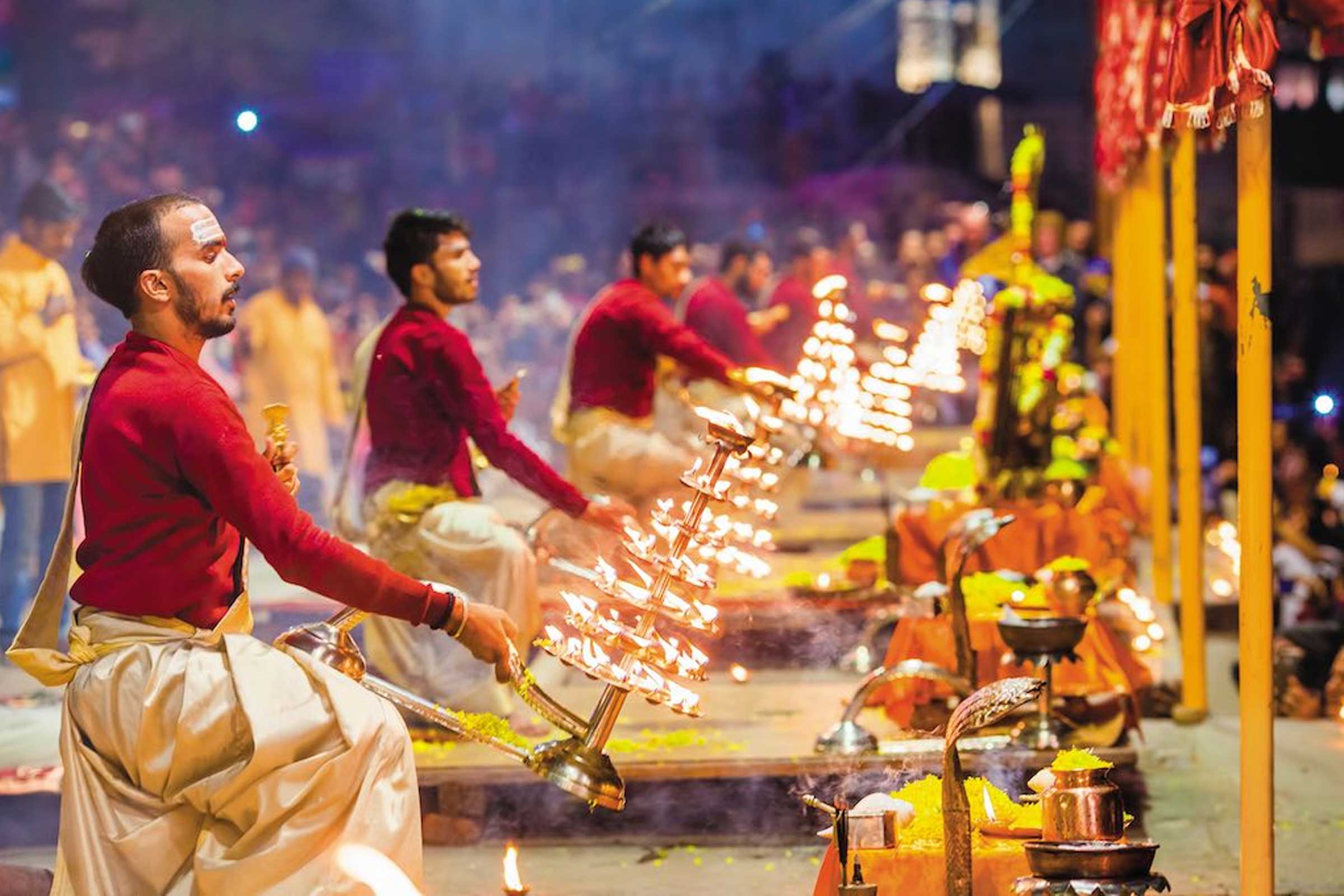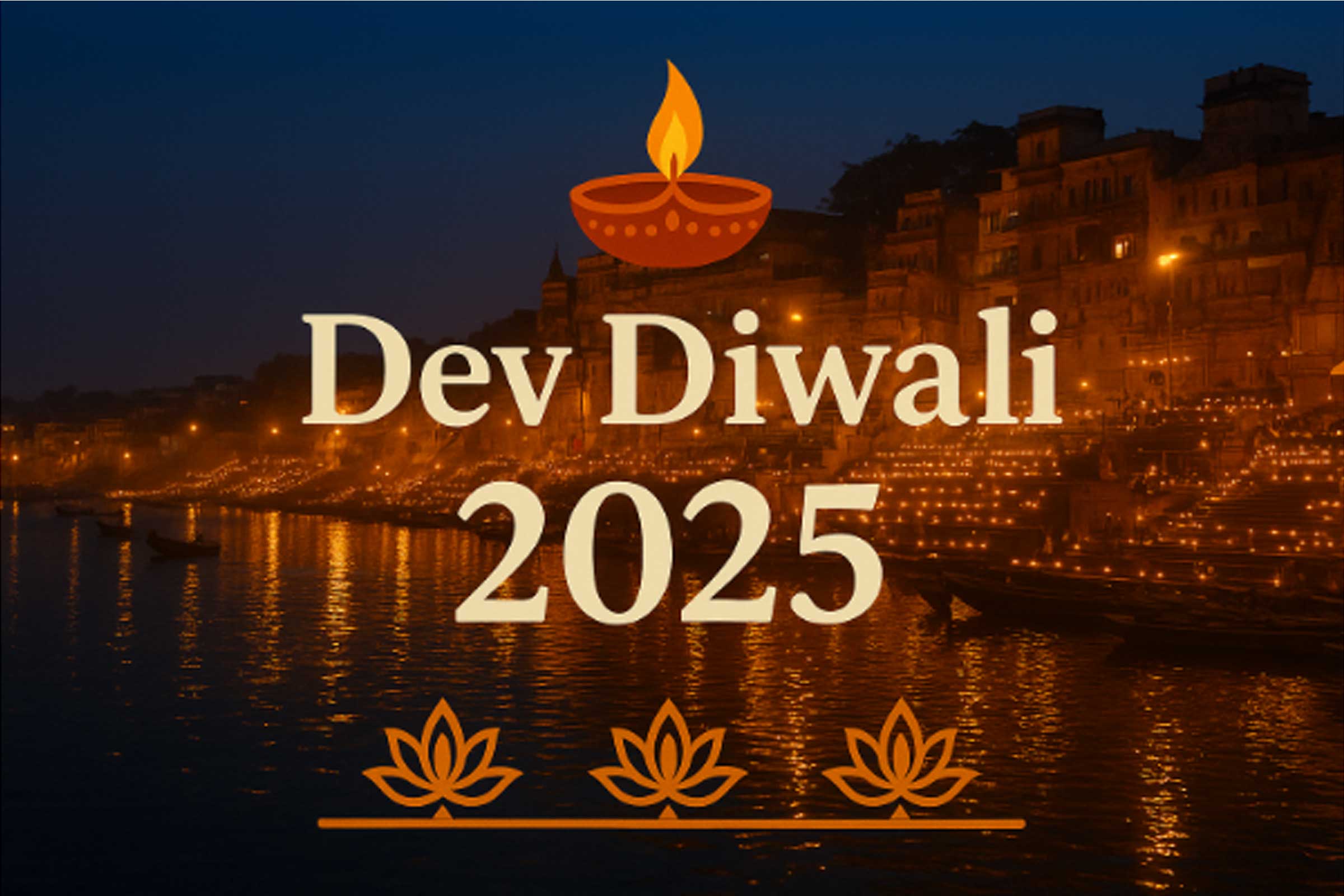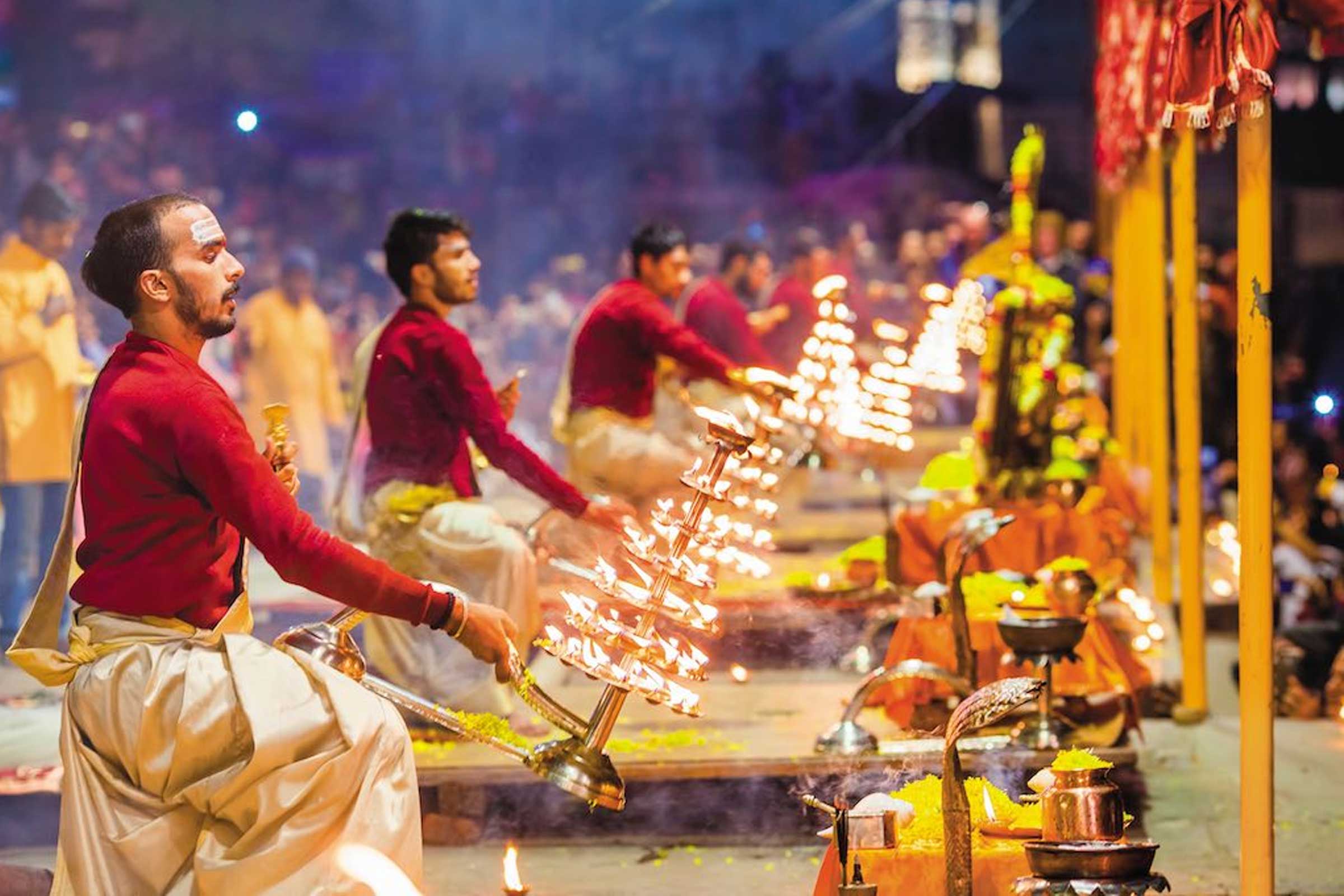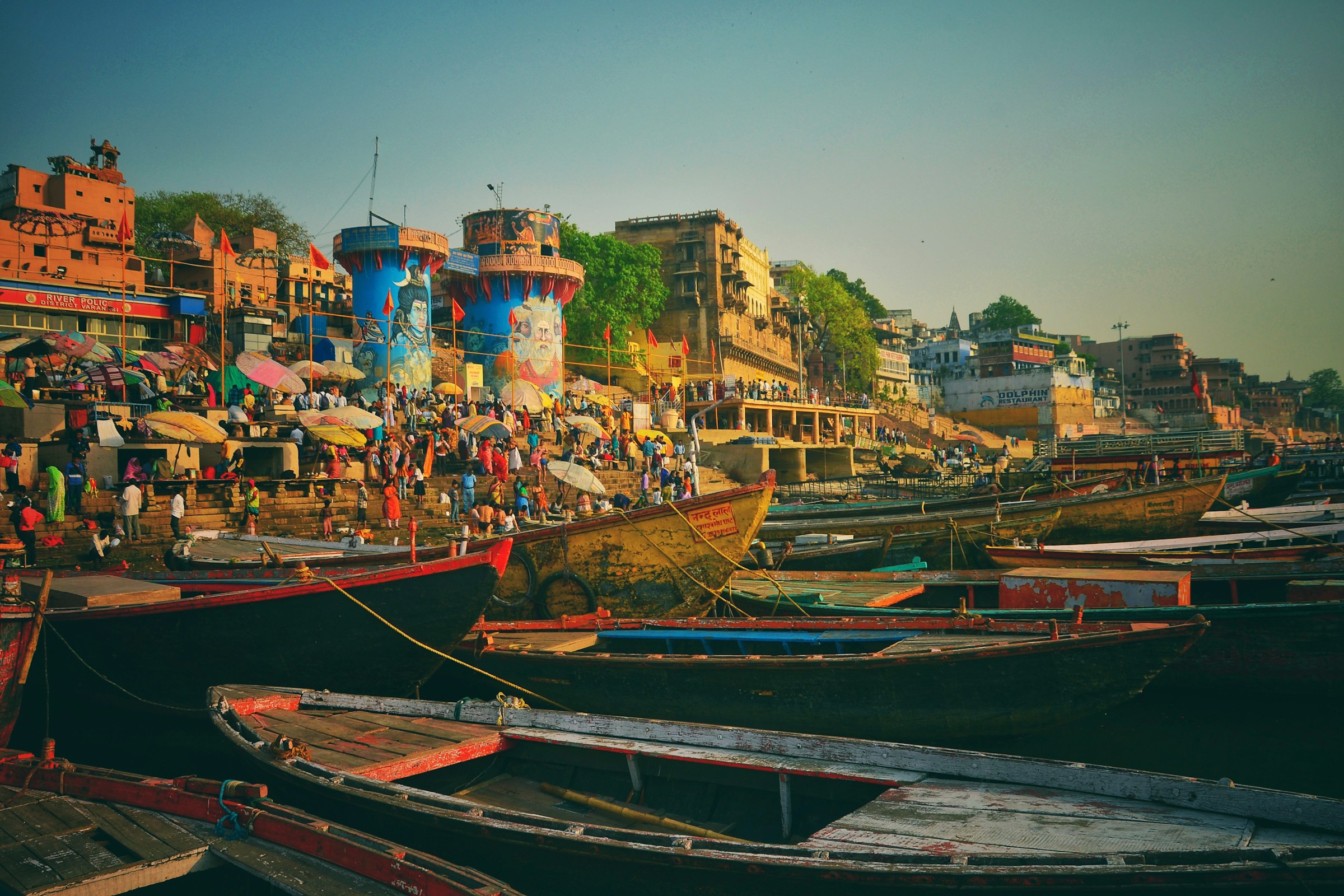Ganga Aarti Time in Varanasi: Complete Guide for First-Time Visitors (2025 Updated)
The Ganga Aarti time in Varanasi is a magical moment that draws pilgrims and travelers from across the globe. As the golden sunset reflects on the river, the ghats glow with priests performing sacred rituals of fire lamps, incense, and melodic chanting. At both Dashashwamedh Ghat and Assi Ghat, this ancient tradition is offered daily as a heartfelt act of devotion to the River Ganga, revered as divine in Hindu tradition.
For anyone visiting, knowing the exact Ganga Aarti time in Varanasi ensures you don’t miss this extraordinary ceremony, which is more than worship—it is the living spirit of Kashi itself. Experiencing the Ganga Aarti time in Varanasi becomes the soul of the journey.
What is Ganga Aarti?
The Ganga Aarti is a traditional Hindu Aarti ritual where priests perform a lamp offering to the River Ganga. This ceremony includes fire, incense, flowers, conch shells, and devotional chants and mantras Varanasi is famous for. The ritual shows gratitude to the river that sustains life and is believed to wash away sins.
The ritual significance of Ganga Aarti is not only religious but also cultural. For centuries, daily worship of River Ganga has connected locals, saints, and travelers. For many, it is more than an event—it is a once-in-a-lifetime Varanasi pilgrimage spiritual experience that binds faith and devotion into a single powerful moment.

Ganga Aarti Timings in Varanasi
The Varanasi Ganga Aarti timing depends on the season. In summer , the Aarti time usually starts around 7:00 PM. In winter, it often begins earlier, around 6:30 PM, since sunset is earlier. On festival days, the start may be delayed because of larger gatherings.
Here’s a quick table of the Ganga Aarti timing in summer vs winter for 2025:
| Season | Aarti Time | Notes |
|---|---|---|
| Summer | 7:00 PM – 7:30 PM | Days are longer, later start |
| Winter | 6:30 PM – 7:00 PM | Starts early due to early sunset |
| Festival Days | Flexible | Expect extended ceremony |
If you’re wondering about today’s Ganga Aarti time in Varanasi, it’s best to confirm locally since seasonal variation in Aarti schedule is common.
Best Ghats to Experience Ganga Aarti
The Dashashwamedh Ghat is the main and most famous spot. The Evening Ganga Aarti schedule at Dashashwamedh Ghat attracts hundreds every day. This is where the largest ceremony takes place with dozens of priests, loud chanting, and synchronized lamp offering. It’s the best option if you want the grandest experience.
The Assi Ghat has a quieter charm, especially in the mornings. The Assi Ghat Aarti time is part of the Subah-e-Banaras program, which includes yoga, music, and the morning and evening Aarti in Varanasi. Many travelers ask, Is Assi Ghat Aarti different from Dashashwamedh Ghat Aarti? The answer is yes. The one at Dashashwamedh Ghat is larger and louder, while Assi Ghat feels more peaceful and personal.
Dos and Don’ts at Ganga Aarti
First-time visitors should remember a few things. Dress modestly, as it is a ceremony held on sacred ground. Arrive early, especially during festival days, to get a good seat. Many prefer to sit close, while others take a boat ride during Ganga Aarti for a different perspective.
Avoid standing in front of devotees who are praying. Don’t push or shout in the crowd. Respect the atmosphere by keeping silence during the chanting. Photography is allowed but use it carefully. The best advice is to watch with open eyes and open heart, not only through a camera lens.
For ganga aarti tour package must visit on this-
Should You Get a VIP Ticket?
A VIP ticket for Ganga Aarti in Varanasi usually guarantees front seating at the best ghat to watch Ganga Aarti in Varanasi. It helps you avoid standing in the crowd and ensures you see every detail of the sacred fire ritual. Prices vary but are not too high considering the comfort.
For first-time tourists, a VIP pass may be worth it, especially if you want close-up photos of the lamp offering or to hear the priests’ chanting clearly. However, many still enjoy the view from a boat ride or from the ghats without tickets. It depends on your preference.
Ganga Aarti Duration and What Happens
The ceremony lasts about 45–60 minutes. It begins with blowing of conch shells and chanting. Then the priests use large oil lamps, known as aartis, waving them in circular motions toward the River Ganga. Flowers, incense, and fire are all part of this sacred ritual on Ganga ghats.
The flow of the sunset Aarti ceremony in Kashi builds slowly, reaching its peak when all lamps are raised high together. The sound of bells and drums mixes with the smell of flowers and smoke. It is an unforgettable evening cultural ceremony in Kashi that feels both powerful and peaceful.
Where to Stay for Best Aarti Experience
Staying near the ghats makes attending easier. Many tourists choose hotels around Dashashwamedh Ghat or Assi Ghat so they can walk to the ceremony. Some hotels even offer rooftop views of the Ganga Aarti viewing spots in Varanasi.
Luxury hotels near the riverfront provide comfort, while guesthouses and homestays give a local feel. Your choice depends on budget, but the closer you are to the Ganges, the more convenient it will be to catch the exact Aarti time without rushing.
Dev Deepavali and Ganga Aarti Festival
During Dev Deepavali, the Ganga Aarti in Varanasi becomes even grander. This festival falls on the full moon after Diwali and is called the “Festival of Lights of the Gods.” The ghats are lit with thousands of diyas, making it one of the most magical nights in Kashi.
Unlike the daily Ganga Aarti schedule in Banarasi, this event draws lakhs of people. The sacred rituals on Ganga ghats during this time are unforgettable. If you want to see the most spectacular version of the ceremony, plan your trip around this festival.
Morning vs Evening Aarti – Which is Better?
The morning and evening Aarti in Varanasi give very different feelings. The Assi Ghat morning aarti is quieter, with sunrise over the river and peaceful chanting. It’s perfect if you enjoy calm beginnings and yoga sessions by the river.
The Evening prayer at Dashashwamedh Ghat is louder and more powerful. With hundreds of lamps, loud bells, and huge crowds, it is the most popular option. For first-time tourists, the evening one is recommended, but if possible, attending both gives the full Varanasi pilgrimage spiritual experience.
Final Thoughts
Knowing the correct Varanasi Ganga Aarti timing is the key to planning your visit well. The Ganga Aarti time in Varanasi changes with summer, winter, and festival days, so always check locally for the exact schedule. Whether you watch from a ghat or enjoy a boat ride, it will stay with you forever.
The spiritual significance of Ganga Aarti in Varanasi lies not only in its beauty but also in its meaning. It is a reminder of life’s flow, devotion, and gratitude. For anyone traveling to Kashi, this ceremony is not just a show but a deep pilgrimage experience you’ll never forget.





